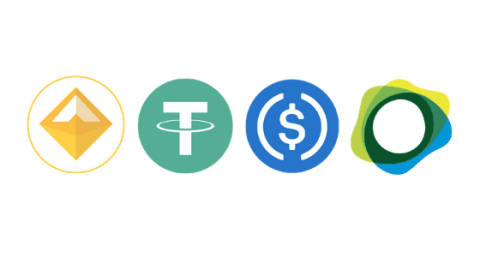South Korea Moves Forward with Won-backed Stablecoin as Cryptocurrencies See Higher Acceptance
South Korea, recognizing both global momentum and local priorities, is poised to introduce a comprehensive regulatory framework for a won-backed stablecoin by October. The initiative, spearheaded by the Financial Services Commission (FSC), aims to deliver robust industry guidelines covering issuance, collateral management, and internal control measures. As the global stablecoin market remains overwhelmingly dollar-centric, Korean authorities and key financial institutions are accelerating efforts to ensure domestic monetary sovereignty—potentially reducing dependency on dollar-pegged tokens while advancing payment innovation.
South Korea’s Regulatory Drive: Stablecoin Legislation Nears Critical Milestone
South Korea’s approach to digital assets is entering a new phase, as the FSC readies a government bill integral to the nation’s evolving cryptocurrency landscape. Informed by the second stage of the Virtual Asset User Protection Act, this bill promises to delineate precise requirements for stablecoin issuance, including mandated collateral reserves and explicit internal control protocols. Representative Park Min-kyu of the Democratic Party of Korea emphasized during a recent policy debate that he’d received direct updates from regulatory officials: “The government bill is expected to be submitted to the National Assembly around October,” he stated, underscoring both urgency and government commitment.
The draft legislation is not merely a bureaucratic exercise. Since 2023, the FSC—through its virtual asset committee—has actively solicited industry input and collaborated across party lines, ensuring that the guidelines account for market realities without stifling innovation. For South Korea’s burgeoning crypto service sector, clear and enforceable rules could foster stability and nurture competitive growth.
Reducing Dollar Dependency: Strategic Motivation Behind a Won-Pegged Stablecoin
Globally, the stablecoin phenomenon has been defined by dominance of dollar-pegged tokens, with $266.3 billion out of a $266.7 billion market cap tied to the US currency—an astonishing 99.8% share, according to RWA.xyz. American policymakers have recently amplified legislative efforts in this sector, spurring other economies to act. South Korea, cognizant of both regulatory gaps and the strategic risks of dollar reliance, is moving swiftly to close ranks.
The push for a won-linked digital asset isn’t just legislative: it’s strategic. The issue has gained traction since President Lee Jae-myung made stablecoin institutionalization a campaign pledge, prompting lawmakers across party aisles to draft competing proposals. Notable among these are Representative Min Byung-deok’s Digital Asset Basic Act, Representative Ahn Do-gul’s Act on the Issuance and Circulation of Value-Stable Digital Assets, and Representative Kim Eun-hye’s Act on Payment Innovation Using Value-Pegged Digital Assets.
Local industry stakeholders, including influential banks and fintechs, have echoed policymakers’ sentiments. In June, a coalition of major banks announced their collaboration on a won-pegged stablecoin project, targeting a late 2025 or early 2026 launch. The motivation is clear: protecting the Korean won against external shocks and mitigating the influence of global dollar dominance, thereby offering South Korean traders, consumers, and institutions an alternative digital asset aligned with domestic monetary interests.
Key Elements of the Forthcoming Legislation
The FSC’s proposed framework will address several pillars crucial for market integrity and consumer protection:
Issuance Requirements: Strict protocols for who can issue stablecoins, with licensing or registration fundamentals expected.
Collateral Management: Transparent and auditable collateral reserves to back each token issuance, reducing systemic risk from under-collateralization.
Internal Controls: Mandated risk management practices, including cybersecurity standards and compliance reporting.
By integrating these controls, the legislative package intends to erect a robust safeguard against market abuse, fraud, and technological vulnerabilities—essentials for maintaining public trust in digital assets.
Broader Implications for Stablecoins and Crypto Market
South Korea’s stablecoin initiative carries potential reverberations beyond the domestic market.
Monetary Sovereignty: By fostering a won-pegged alternative, Korea advances its autonomy over financial infrastructure, deterring dependency on foreign-currency tokens.
Technology and Innovation: A fresh legislative template could serve as a model for other Asian economies grappling with similar dilemmas.
Investor Outlook: Capital market participants should closely monitor regulatory signals; clarity on issuance and risk controls is likely to boost institutional participation and liquidity.
This legislative sprint is emblematic of Korea’s broader ambition: to lead, rather than merely adapt, in the increasingly digitized realm of financial services. With market size, industry collaboration, and regulatory momentum converging, Korea’s won-pegged stablecoin could reshape how digital money is used within—and beyond—its borders.
Strategic Agenda for Investors and Policymakers
As South Korea nears the introduction of a comprehensive stablecoin regulatory framework, the stakes for both domestic and global financial ecosystems mount. Industry participants should prepare for enhanced oversight but also growth opportunities as regulatory clarity sets in. For policymakers, the challenge will be to balance innovation with prudent risk controls.
Ultimately, the emergence of a viable won-pegged stablecoin could mark a structural shift in Asia’s digital finance landscape, offering a blueprint for sovereign-backed crypto integration in an era of dollar dominance.
